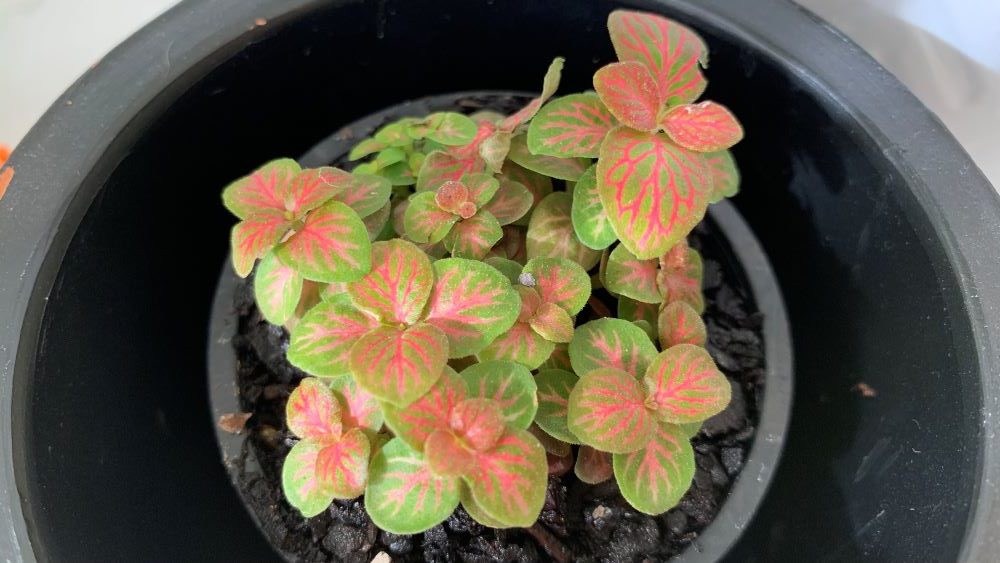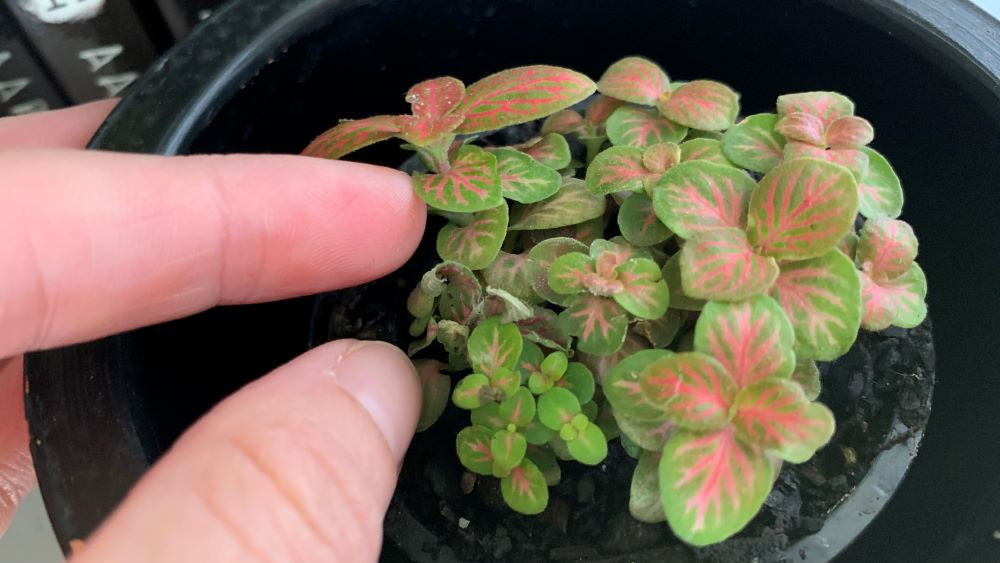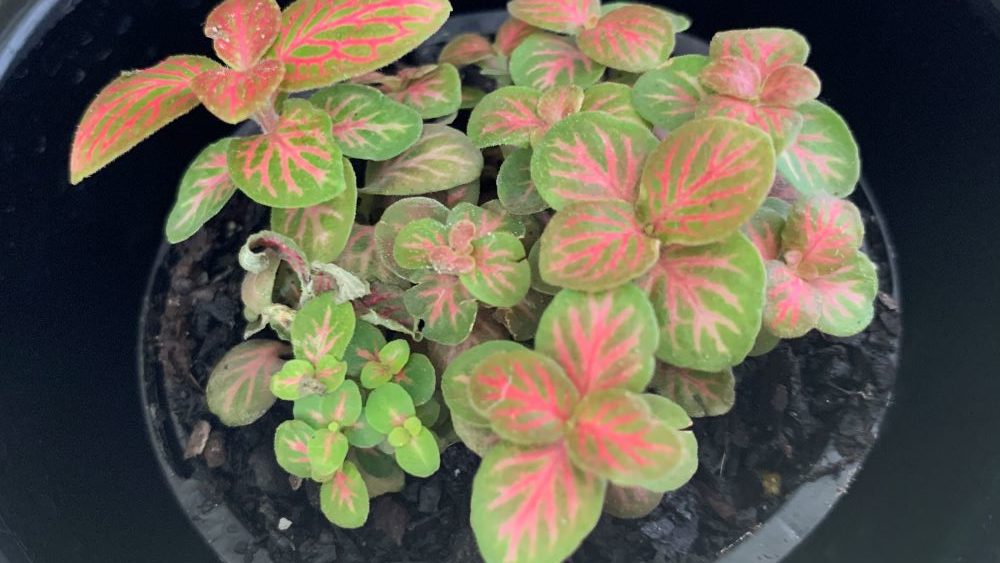Nerve plant leaves will curl if they are lacking water, are attacked by mealy bugs, are lacking light and nutrients. The nerve plants will recover from curled leaves if they are watered well, given bright filtered light and are grown in good quality soil.
Nerve plants can be attacked by pest insects which can suck the sap from the veins of the leaves and cause them to curl and shrivel up.

We’re an affiliate!
We hope you love the products we recommend. If you click we may collect a share of sales on this page. Thank you if you use our links, we really appreciate it!
This article will explore the top reasons why nerve plant leaves curl and what you can do to solve each problem.
Top reasons why nerve plant leaves curl and solutions
Here are the top 8 reasons why nerve plant leaves curl and what you can do to fix each problem.
1. Too much or not enough water
The top reason why nerve plants will get curled leaves is if they are getting too much or not enough water. When plants are overwatered the nutrients can be washed out of the soil. When the plant is not getting enough of the key nutrients it needs the leaves can curl.
Reduce your watering schedule and give the plant a dose of a balanced liquid fertilizer. Watering nerve plant every few days will be enough over summer and this can be reduced to once a week during the cooler months.

For nerve plants that are not getting enough water their leaves can also curl. You can tell that this is the problem because it will be matched by dry surface soil. Water the nerve plant deeply or soak the whole plant in a bucket of water with a dash of seaweed solution.
Make sure you let the pot drain well before bringing it back inside.
The key to a healthy nerve plant is to keep the soil moist but not wet.
2. Pest attack
Mealy bugs are a common problem on indoor nerve plants and are more likely to attack those plants that are already struggling. Mealy bugs are a small white furry bug that can find a home on the leaf joins. These small bugs can suck the sap from the stems and leaf veins and cause the leaves to curl.
Spidermite are also a common pest on indoor plants that can cause the leave to curl. They are small red or brown insects with tiny legs.
Both mealybugs and spidermite can be treated with neem oil. Spray this oil onto the plant every 2 weeks to treat the problem.
3. Too much or not enough light
Nerve plants can develop curled leaves if they are not getting enough light. While these plants do not like direct sun, they can suffer and go droopy if they are not getting enough UV light. Place them near a bright window with filtered morning light.
If you want to place your nerve plant in a darker area, it is best to use a UV grow light. These are low cost and easy to place.
Check out small grow lights on Amazon here.

Nerve plants that are getting too much light can also suffer from drooping leaves. Sunburn can cause leaf damage which will be matched with brown marks.
Move nerve plants into an area that is shaded and protected from direct sun through windows which can get very hot. Always avoid afternoon sun as the delicate leaves can be damaged easily.
4. Lack of nutrients
A lack of nutrients can cause nerve plant leaves to curl. Potted nerve plants will need an all purpose fertilizer in spring to keep them healthy. Use a slow release indoor plant food to keep them happy. This will keep their leave strong, healthy and prevent curling.
5. Humidity
A lack of humidity can cause leaves on nerve plants to curl. Nerve plants love a humidity level above 50%. If you live in a low humidity climate you can help the plant out by misting it in the morning or investing in a humidifier which can be placed near the plant.

6. Cold weather
Cold weather can cause nerve plants to suffer and experience curling leaves. If your winters get below 50 degrees Fahrenheit or 10 degrees Celsius it is important to place your plant near a bright window. Keeping it in the warmest part of your house is a great way to keep them happy over winter.
7. Poor soil
Poor soil can cause leaves on nerve plants to curl. Poor quality potting mix can lack nutrients, can become anerobic and hydrophobic where it lack oxygen and will struggle to absorb water. Use a new, good quality potting mix when repotting your nerve plant.
8. Too much soil after repotting
Repotting nerve plants once they outgrow their space is a great idea however too much soil can cause leaves to curl.
When there is too much soil it can stay damp for too long and the roots can rot. The roots will struggle to absorb the nutrients they need and cause the leaves to curl.
When repotting your nerve plant, always choose a pot that is 1 size bigger than the one that it is in. This will make sure there is not too much soil around the plant.
Nerve plants can end up with curled leaves due to water imbalances, lack of nutrients, pest attack and inadequate light. Check for these 9 factors and address each one to save your nerve plant.
Why nerve plant leaves curl | Summary
Nerve plants are hardy but can end up with curled leaves if they are not getting what they need. Use a good quality potting soil to deliver nutrients when you are repotting, give them a slow release indoor plant fertilizer in spring and keep the soil moist but not wet.
Nerve plants can recover from curled leaves if the problem is fixed. Try these 8 solutions and your will have a happy nerve plant.
Happy growing.
I am an accredited practicing dietitian, experienced gardener and a dedicated cook. I love writing and sharing my experience so you can learn from my successes and mistakes.
